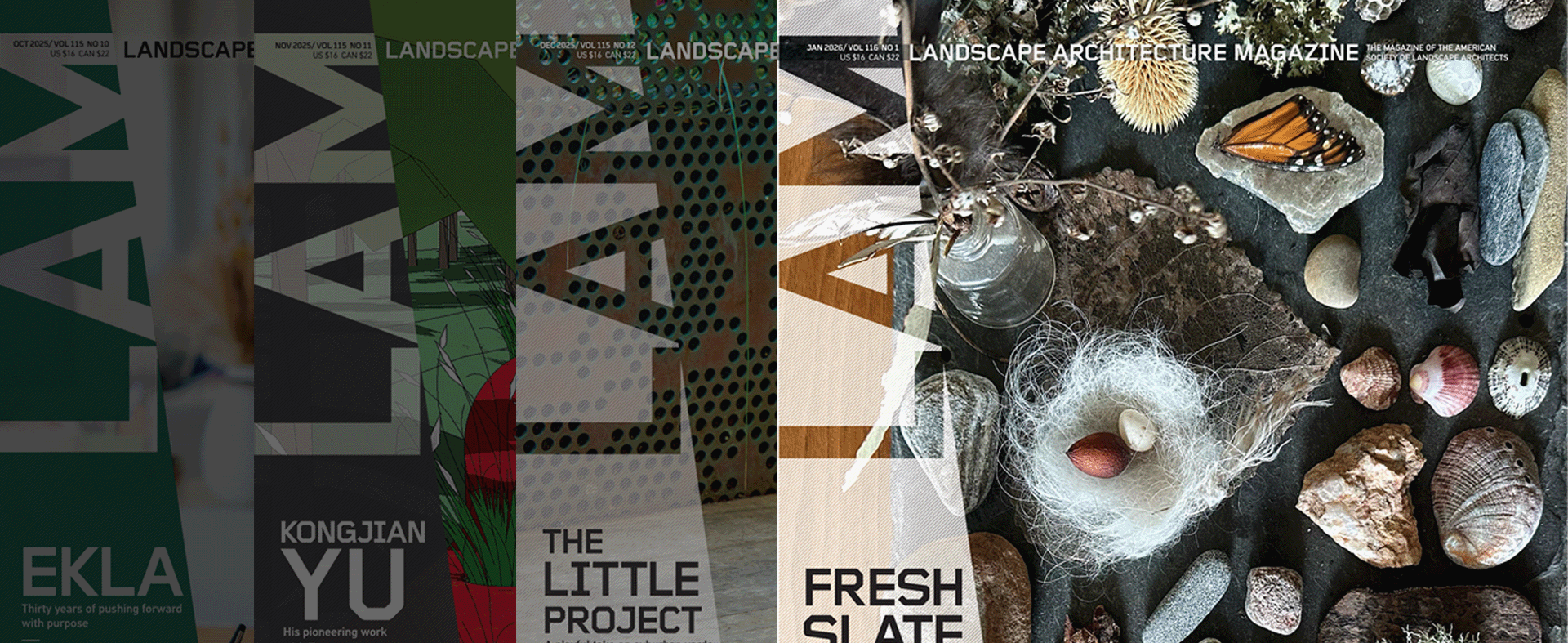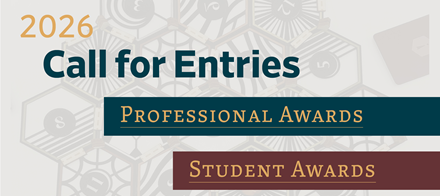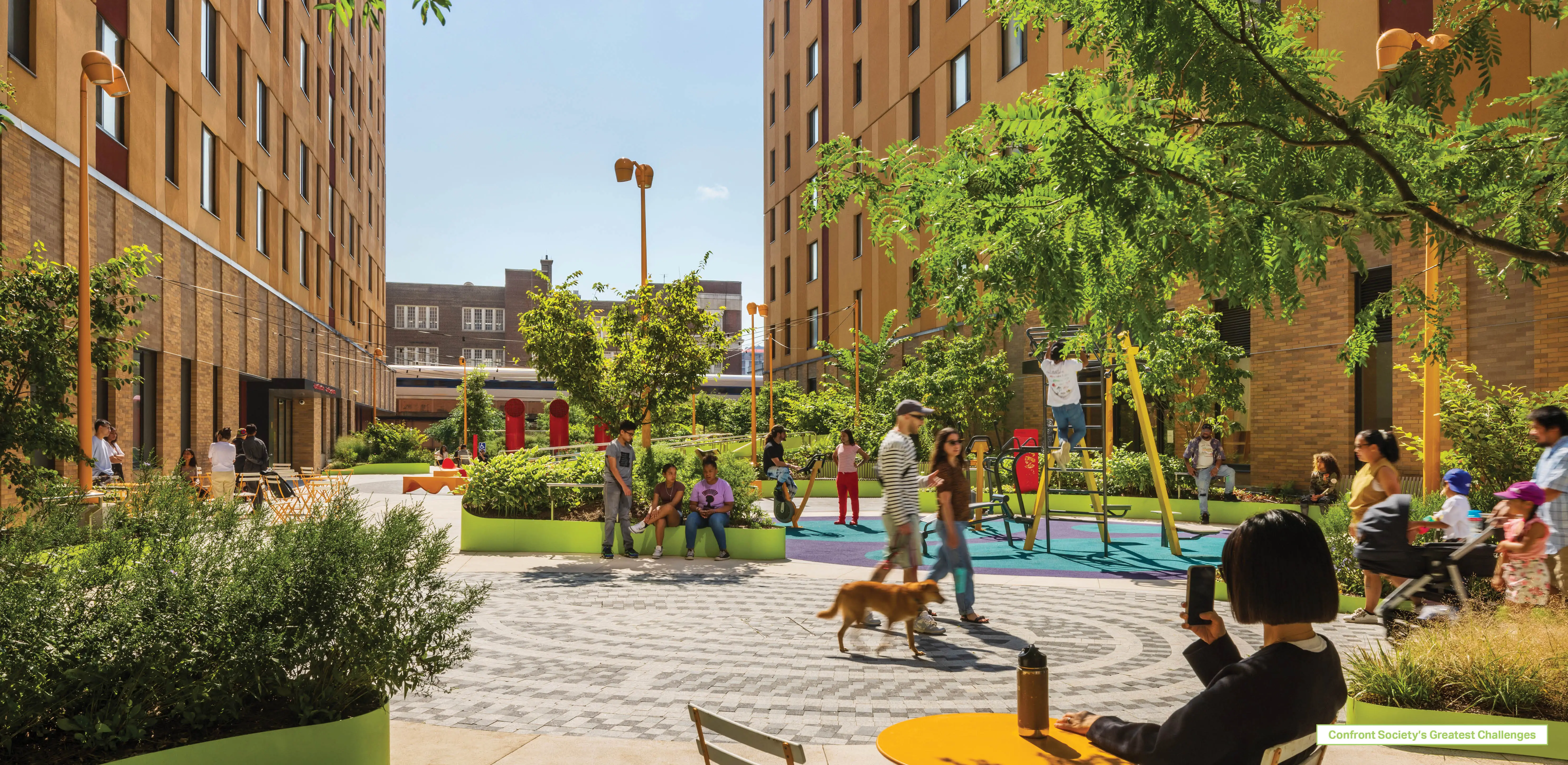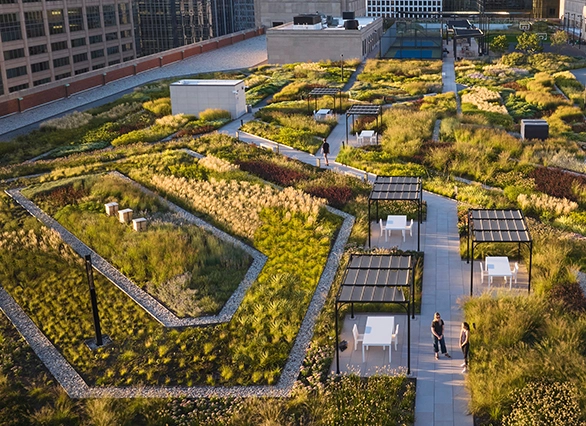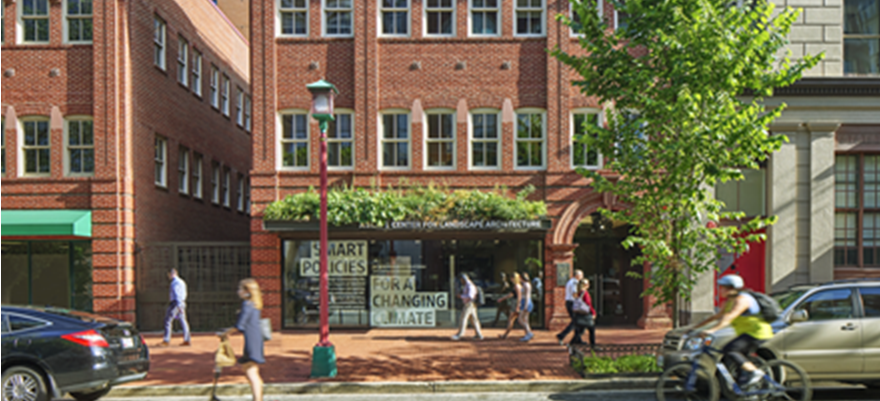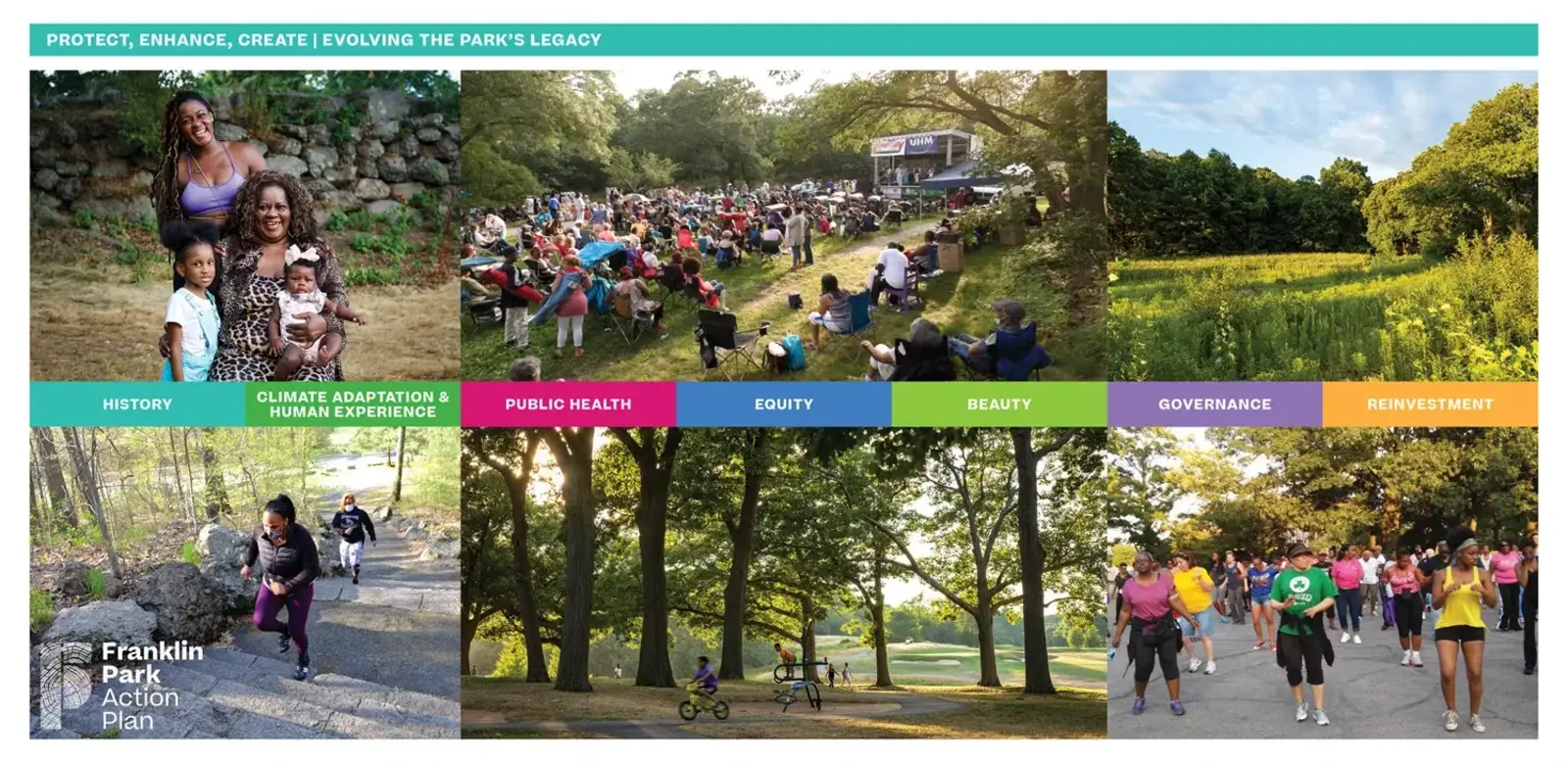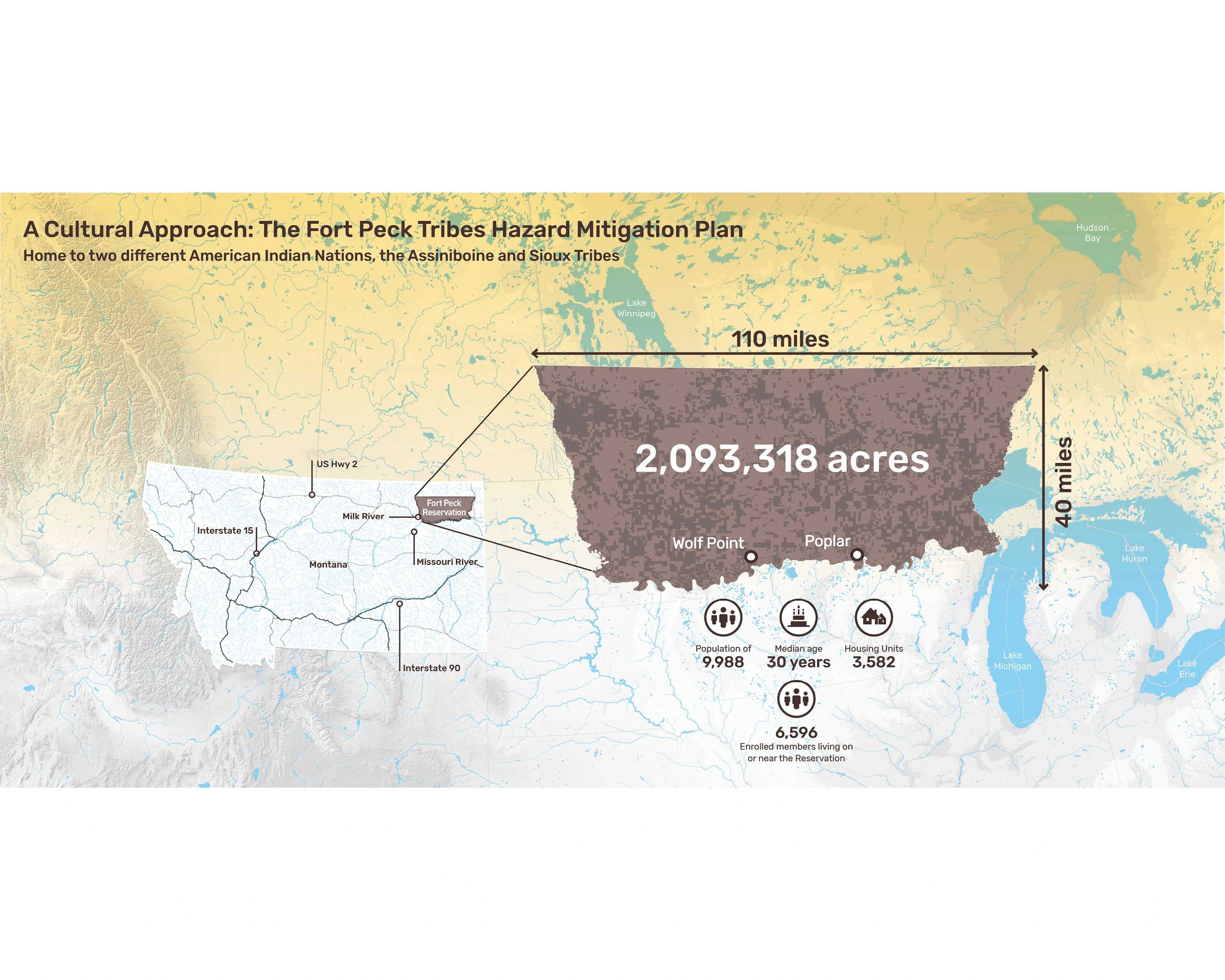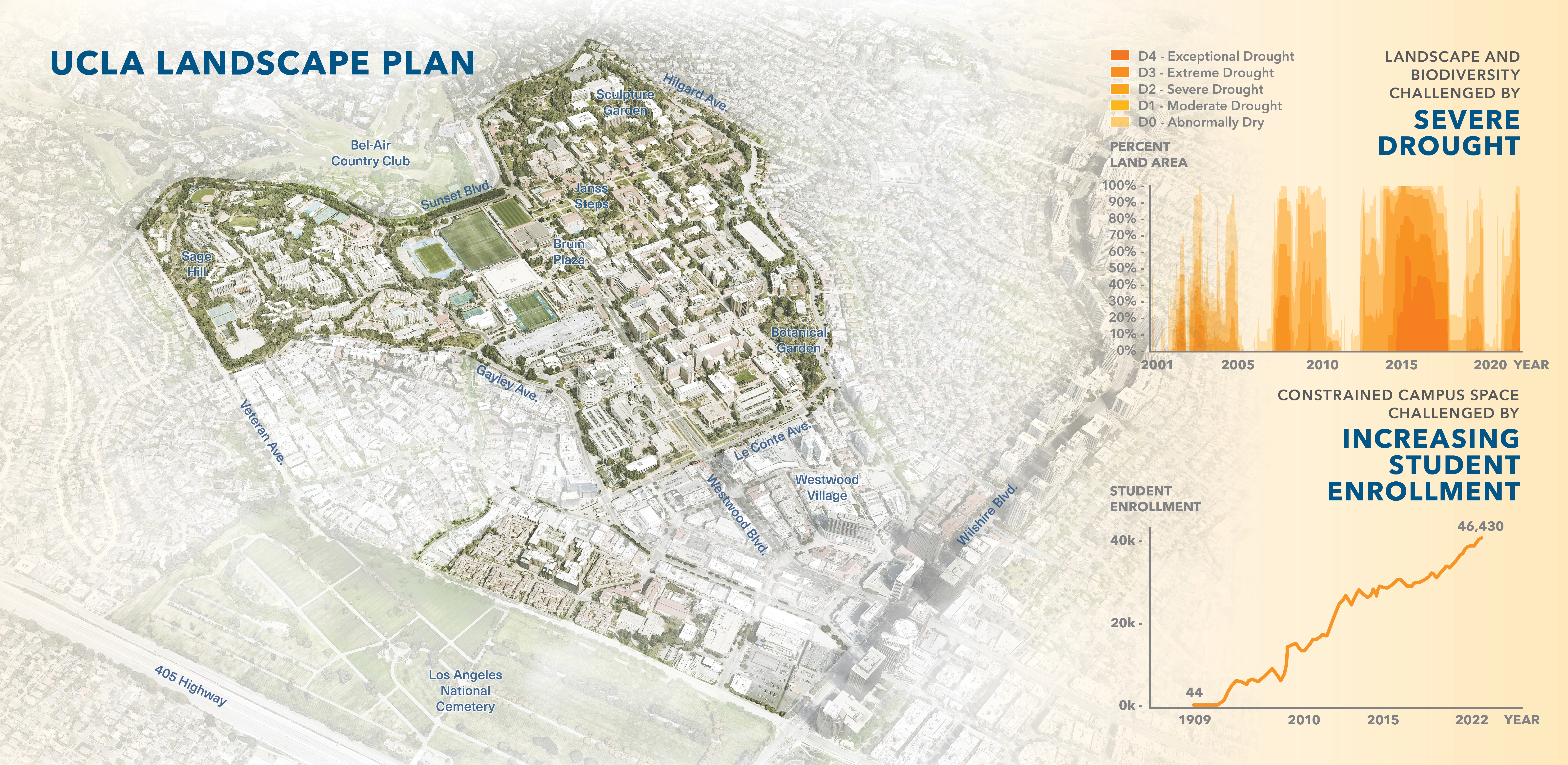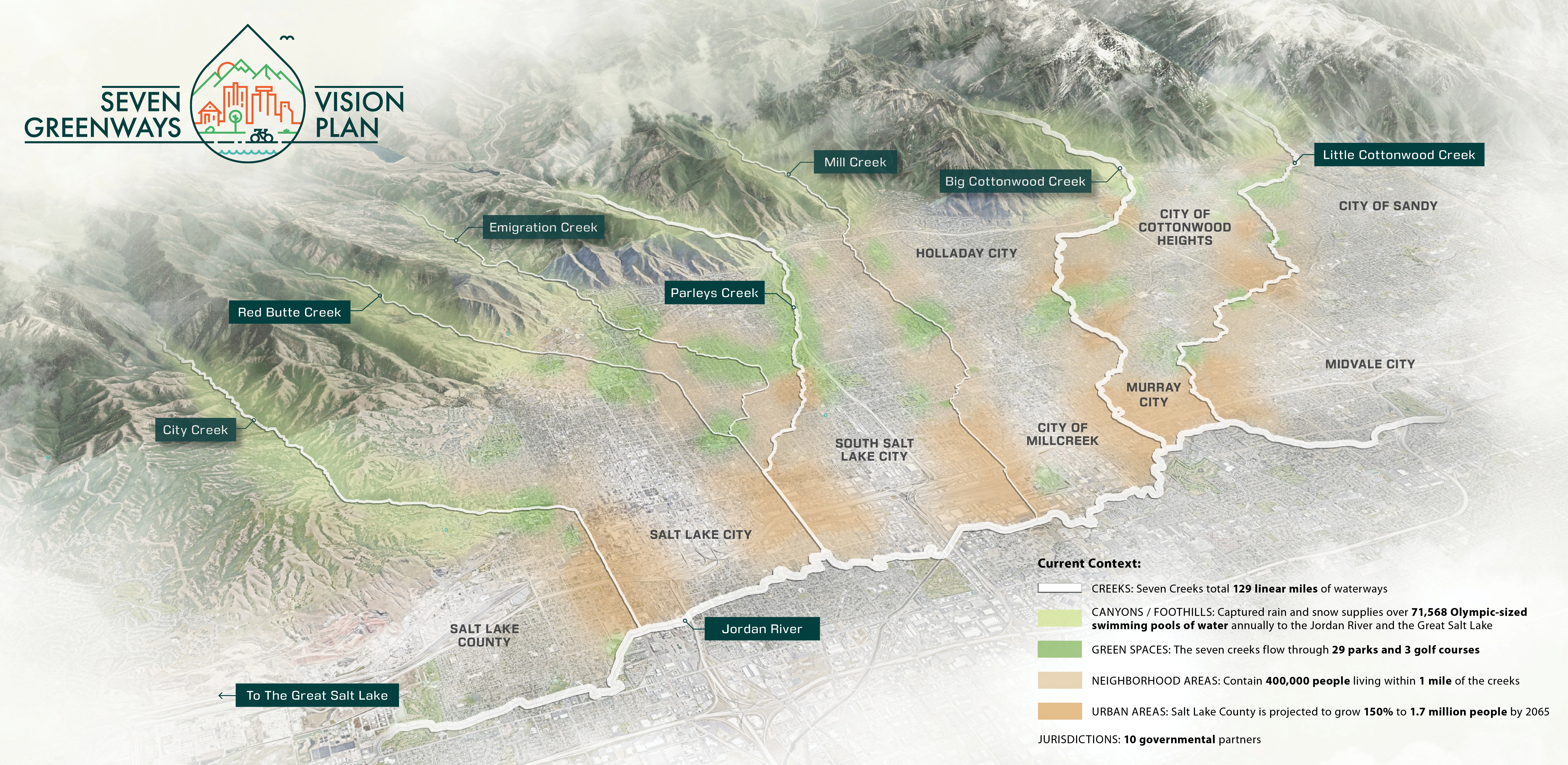Re-investing in a Legacy Landscape: The Franklin Park Action Plan
The applicant recognized and embraced the park’s greatest resources: its people, landscape, and history, to develop a plan that rejuvenates the park while respecting and protecting its value to adjacent communities. This thoughtful plan honors the park’s design heritage while engaging and expanding its users without reinvention. The design renews ecological systems and heightens the unique ways adjacent communities have adapted the park to meet their needs. It also represents a respectful intervention considering the integration of natural systems and adaptation to climate change.
Awards Jury
-
Franklin Park has long been a beloved center of recreation, gathering, and discovery for Boston’s most diverse communities. Emerging from the Imagine Boston 2030 Plan, the Action Plan is founded on equal respect for the park's historic fabric, ecological systems, and the strong community of contemporary users who have stewarded it through years of disinvestment. Focused on issues of equity, ecological resilience, climate change, and cultural significance, its aspirations are forward-looking and visionary, but based in practical and action-oriented recommendations. It advocates for thoughtfully guided, community-driven improvements implemented through equitable investment to enable this treasured park to do what it does now, only better.
-
Background Frederick Law Olmsted’s plan for Franklin Park conceived of an expansive New England landscape where all were welcome to enjoy the benefits of recreation and experience nature within the city. Incremental changes have obscured this design. New leaseholders and car traffic split the park into pieces, making it hard to get to, move through, and experience. While years of deferred maintenance have left the park's physical fabric and ecological systems in severe decline, its neighbors — a rich convergence of cultures also underserved by their city — have become its strongest advocates and stewards. Intent With $28 million in City funding and a maintenance endowment in place, the Boston Parks and Recreation Department engaged the design team in the creation of the Franklin Park Action Plan—the first comprehensive plan for Boston's largest park in nearly 30 years. Supported by multidisciplinary consultants with wide-ranging specializations, the team united around an understanding that renewing the park requires honoring its design heritage, engaging and expanding its users, renewing its ecological systems, and reconnecting with surrounding communities.
The Action Plan does not seek to reinvent the park by packing it with revenue-driven program or to transform its design, character, or original intention. Instead, it embraces the ways adjacent communities have adopted and adapted the park to meet their needs and the way people live in cities today. Recommendations are practical and action oriented, focusing on improving social and ecological health.
The Plan promotes a return to Olmsted's original principals without displacement of its evolved significance and current users — linking people to the power of natural phenomena and cultivating access to open space and outdoor recreation, both in the belief that they enhance our daily lives, improve public health, and promote civic discourse. Engagement & Design Process The team implemented a layered approach to community engagement to reach all of the park’s neighborhoods and emphasized the practices of meeting people where they are, uncovering rich information about the park’s past and present, and working with local community groups. Outreach methods were deployed in seven languages, including workshops, neighborhood meetings, surveys, pop-up events, and neighborhood canvassing, even amid the challenges of the pandemic. Campaigns via a project website, email blasts, social media, and park signs bolstered awareness of the process and encouraged participation, resulting in over 26,000 touchpoints. Ongoing participation data was analyzed to prioritize broad and diverse representation. The extensive engagement inputs and the team’s deep analysis of the park’s history, communities, and land has shaped five primary recommendations for the park's renewed stewardship and continued evolution:
- Make Connections & Activate Edges Clarify Movement Amplify Magnet Destinations Unify the Park Build Capacity & Enable Change
Implementation priorities include anti-displacement, equitable procurement, governance, and funding strategies aligned with the community context. The Plan emphasizes continued community engagement, strengthened partnerships, civic stewardship, and relies on effective coordination amongst a new City Task Force to ensure broader goals and initiatives support plan priorities.
-
- Agency Landscape + Planning - Core Team—Outreach and Engagement
- MASS Design Group - Core Team—Urban Design
- ARUP - Mobility & Transportation
- Ethan Carr - Landscape History
- ETM Associates - Maintenance & Operations
- Grayscale Collaborative - Equity & Inclusion
- HLB - Lighting Design
- Julia Africa - Public Health
- Landwise - Economics
- Nitsch Engineering - Stormwater Management
- Olsson - Soil Science
- OverUnder - Visual Identity & Wayfinding
- RES - Ecology
- Siteworks - Cost Estimating
- Tree Specialists, Inc. - Arboriculture
- John Kett, ASLA - Reed Hilderbrand LLC Landscape Architect
- Kristin Frederickson, ASLA - Reed Hilderbrand LLC Landscape Architect
- Lydia Gikas Cook, ASLA - Reed Hilderbrand LLC Landscape Architect
- Gary Hilderbrand, FASLA - Reed Hilderbrand LLC Landscape Architect
- Eric Kramer, FASLA - Reed Hilderbrand LLC Landscape Architect
- Echo Chen, Associate ASLA - Reed Hilderbrand LLC Landscape Architect
- Danica Liongson, Associate ASLA - Reed Hilderbrand LLC Landscape Architect
- Jackson Plumlee, Associate ASLA - Reed Hilderbrand LLC Landscape Architect
- Yuquing Zhang - Reed Hilderbrand LLC Designer

.webp?language=en-US)
